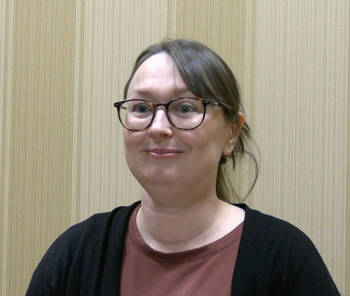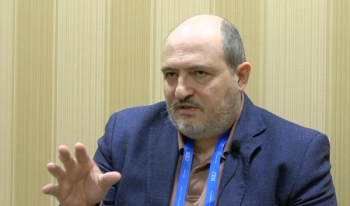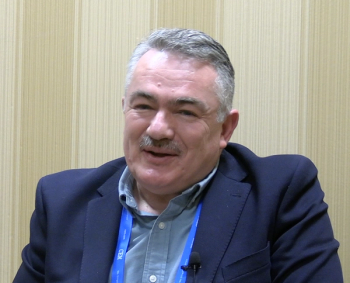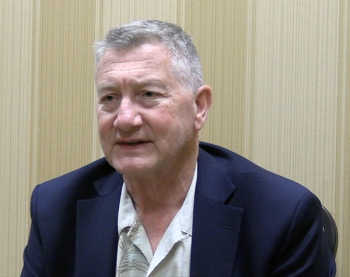
From Pharmaceutical to Agricultural Applications: What’s New in NIR?
Near-infrared (NIR) spectroscopy offers quick analysis with no sample preparation for many fields, but it is particularly popular for process monitoring, materials science, and medical uses. NIR has also seen applications in agriculture from the very start of the technique, but new instrument capabilities are poised to offer even more to that field. Benoît Igne, a principal scientist at GlaxoSmithKline in King of Prussia, Pennsylvania, recently spoke to us about his work using NIR and areas where he thinks the technique has growth potential, specifically process analytical technology and agriculture.
Near-infrared (NIR) spectroscopy offers quick analysis with no sample preparation for many fields, but it is particularly popular for process monitoring, materials science, and medical uses. NIR has also seen applications in agriculture from the very start of the technique, but new instrument capabilities are poised to offer even more to that field. Benoît Igne, a principal scientist at GlaxoSmithKline in King of Prussia, Pennsylvania, recently spoke to us about his work using NIR and areas where he thinks the technique has growth potential, specifically process analytical technology and agriculture.
Your work experience has explored how NIR spectroscopy can be used to better control pharmaceutical manufacturing. How did you get involved in that area? What was the most interesting thing you discovered about NIR for pharmaceutical manufacturing?
Igne: I have always been interested in measuring quality. During my master’s degree studies in Toulouse, France, I worked with food companies to predict quality parameters using IR and NIR. As I carried on my graduate education at Iowa State University, I applied NIR to the measurement of grains and feed. I chose this area of study because I have never been attracted to wet chemistry and the related sample preparation and slow outputs. I have found NIR to be a very satisfying measurement technique where the analysis is made rapidly, without sample preparation, and can provide comparable results to its wet chemistry equivalent. I am also very interested in how chemometrics can be used to extract the relevant information from the spectra, similar to how a chromatography column separates out the components of interest. When I joined Duquesne University, I started using NIR and chemometrics for pharmaceutical issues. I found the possibility of building an entire dataset using synthetic powders very convenient. In contrast to agriculture and other fields impacted by growth cycles, in the pharmaceutical industry it is possible to develop methods a lot more efficiently.
In the preface to the second edition of your book (1), you comment that regulatory documents issued by the FDA, EMA, and ICH, starting in 2002, have “. . . helped position near-infrared spectroscopy as a highly relevant tool for achieving control when built-in quality is preferred over quality by testing.” What is your assessment of the progress that has been made in using NIR and similar methods for process control, since the agencies started issuing those documents in 2002?
Igne: While the documents issued by national and international agencies do provide a framework within which to work, I think the industry is still struggling to comfortably submit files that include process analytical technology (PAT) as a tool for some sort of decision on the process or batch release. One of the common sticking points is related to calibration updates. Like every analytical tool, PAT requires model maintenance. It is, however, the complexity of the requirements around the submitting these updates or adjustments to registered methods with the FDA or another regulatory agency that add complexity to the long-term deployment of these tools. Progress has certainly been made but processes can be further simplified.
How does NIR research fit into your agricultural background? Are there any agricultural areas you see as potential future applications for NIR?
Igne: In agriculture, you want to be able to make decisions quickly based on reliable data. NIR has positioned itself as a great tool to be able to provide some of the information farmers are looking for. Combine harvesters can now be equipped with NIR sensors to provide the mapping of fields, using a GPS device, based on product quality. Soils can also be analyzed from the ground or by using remote sensing imaging solutions. These data can, for instance, be used in subsequent years to adapt fertilization plans to local heterogeneities and increase yields. As instrument manufacturers provide smaller and more cost effective sensors, we can expect NIR to be deployed not only in centralized locations but also more widely. Bringing the information directly to those in charge of making the decisions in the field may be the next frontier for NIR in agriculture.
Do you think NIR will ever see significant adoption beyond process applications, and be used in the laboratory?
Igne: While there are numerous NIR applications in the laboratory (off-line) or at-line, most of the advantages of the technology are certainly found in process monitoring and control. What makes NIR so suitable for processes (relatively low sample absorbance allowing some depth of penetration, rapid acquisition, limited to no sample preparation, and so on) is also what makes it less attractive than other methods for laboratory applications (sensitivity to sample physical properties, overlapping bands). In the laboratory, NIR applications could be replaced by techniques such as transmission Raman; but it is not clear, for the time being, that any other technology can replace the flexibility that NIR provides in process monitoring and control.
What are the next steps in your work?
Igne: Value from the deployment of PAT techniques can be obtained through a number of avenues: improved process understanding allowing shortened development time, real-time assurance, real-time release testing, and so on. However, NIR, along with other PAT tools, cannot be solely used for making decisions on processes. It is the integration of the outputs from PAT tools with statistical process control and automation that provides the possibility to monitor and control a process. This is the area that I am progressively going toward, and I hope to be able to use NIR and other tools to work on setting up fully integrated control systems to guarantee product quality and ensure patient safety.
References
- E.W. Ciurczak and B. Igne, Pharmaceutical and Medical Applications of Near-Infrared Spectroscopy (CRC Press, Boca Raton, Florida, 2015).
Click
Newsletter
Get essential updates on the latest spectroscopy technologies, regulatory standards, and best practices—subscribe today to Spectroscopy.




